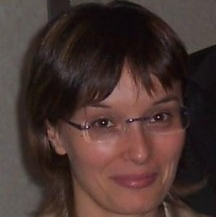Shallow Water Modeling
A special issue of Water (ISSN 2073-4441). This special issue belongs to the section "Hydraulics and Hydrodynamics".
Deadline for manuscript submissions: closed (30 April 2022) | Viewed by 7692
Special Issue Editors
Interests: shallow water modeling; model calibration; microturbine design and management
Special Issues, Collections and Topics in MDPI journals
Interests: 2-D shallow water modeling; flood hazard; flood hazard communication; post-flood surveys and flood reconstruction; urban flooding; dam breach modeling
Interests: environmental hydraulics; river hydrodynamics; ecohydraulics; computational methods in hydraulics
Special Issues, Collections and Topics in MDPI journals
Interests: mathematical and numerical modeling of debris flows; snow avalanches; rock–ice avalanches; sediment transport in rivers and torrents
Special Issues, Collections and Topics in MDPI journals
Special Issue Information
Dear Colleagues,
Climatic changes occurring in the world lead to more and more frequent extreme hydrological events, often associated to floods, debris flow, and landslides. Public administrations and land owners need reliable tools to predict water depths, mean velocities, and solid transport occurring during the forecasted events.
Shallow water modeling (SWM) is one of the main pillars available today to support the evaluation of the associated hydraulic risk. Recent advances in computer methods and computational hardware allow the inclusion of SWM in the standard management tools of public authorities and private managers of both urban and not-urban areas. SWM can also be a tool for the building information modeling (BIM) approach recently adopted for the design of civil infrastructures.
In the more general effort to model natural processes and to prevent pollution, SWM can link many physical processes occurring overground and below its surface, such as heat transfer or chemical and biological transformations. SWM can also be easily coupled to 1D vertical models like the infiltration process leading to the rainfall–runoff transformation, or the multiphase vertical transfer occurring in lakes, lagoons and other natural water bodies, as well as to models for the study of river hydraulics, morphodynamics, and sediment transport.
Prof. Dr. Tullio Tucciarelli
Prof. Dr. Francesco Macchione
Prof. Dr. Carlo Gualtieri
Prof. Dr. Giorgio Rosatti
Dr. Silvia Barbetta
Guest Editors
Manuscript Submission Information
Manuscripts should be submitted online at www.mdpi.com by registering and logging in to this website. Once you are registered, click here to go to the submission form. Manuscripts can be submitted until the deadline. All submissions that pass pre-check are peer-reviewed. Accepted papers will be published continuously in the journal (as soon as accepted) and will be listed together on the special issue website. Research articles, review articles as well as short communications are invited. For planned papers, a title and short abstract (about 100 words) can be sent to the Editorial Office for announcement on this website.
Submitted manuscripts should not have been published previously, nor be under consideration for publication elsewhere (except conference proceedings papers). All manuscripts are thoroughly refereed through a single-blind peer-review process. A guide for authors and other relevant information for submission of manuscripts is available on the Instructions for Authors page. Water is an international peer-reviewed open access semimonthly journal published by MDPI.
Please visit the Instructions for Authors page before submitting a manuscript. The Article Processing Charge (APC) for publication in this open access journal is 2600 CHF (Swiss Francs). Submitted papers should be well formatted and use good English. Authors may use MDPI's English editing service prior to publication or during author revisions.
Keywords
- shallow water
- 2D numerical models
- floods
- mobile bed
- water transport
- river hydraulics
- hydraulic risk
- dynamic wave
- diffusive models









